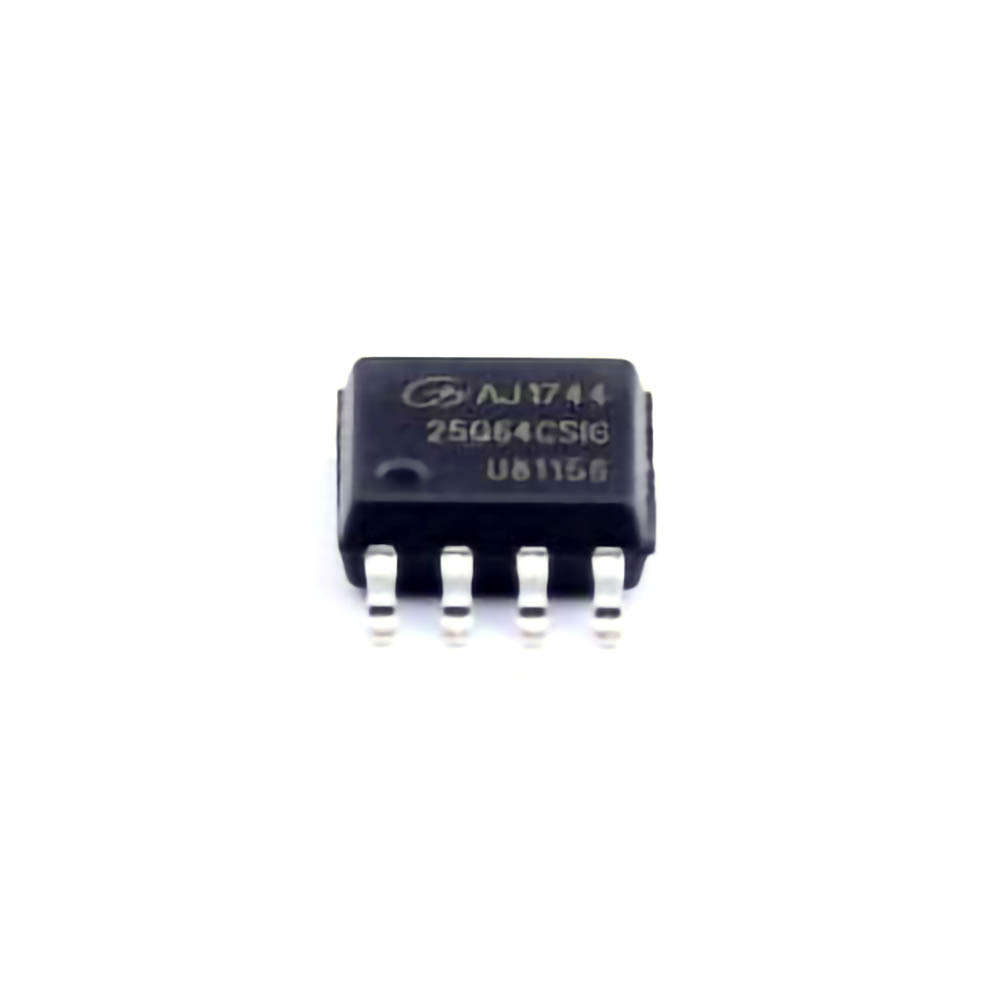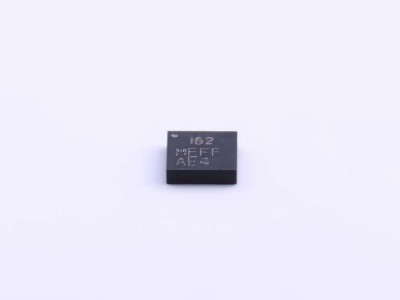
This guide offers an in-depth look at the common troubleshooting scenarios and solutions for the GD25Q64CSIG flash Memory chip. With a focus on practical tips, this article provides valuable insights for engineers and technicians working with this specific component, enabling them to resolve issues quickly and efficiently.
GD25Q64CSIG, flash memory troubleshooting, common issues, electronics repair, flash memory solutions, GD25Q64CSIG solutions, memory chip errors, technology repair, electronics troubleshooting, GD25Q64CSIG fixes
Understanding the GD25Q64CSIG Flash Memory Chip
The GD25Q64CSIG is a popular 64Mb (8MB) NOR flash memory chip from GigaDevice. It is widely used in various applications, including consumer electronics, automotive systems, and industrial devices due to its reliable performance and low Power consumption. However, like any other component, the GD25Q64CSIG can experience operational issues that may disrupt your project or system. Understanding common problems and knowing how to troubleshoot them is crucial for maintaining system stability and performance.
1. Data Corruption or Loss
One of the most frequent issues encountered with the GD25Q64CSIG is data corruption or loss. This problem can occur due to several reasons, including power failures during data writing, improper voltage levels, or issues with the connection between the memory chip and the microcontroller or processor.
Possible Causes:
Power Loss: A sudden power outage or voltage instability during a write operation can corrupt the data stored in the flash memory.
Incorrect Voltage Levels: Flash memory chips require a stable and specific voltage for both reading and writing. Voltage fluctuations can lead to read/write errors or data corruption.
Connection Problems: Poor connections between the flash memory and the main processor can result in intermittent data corruption, especially when signals are weak or noisy.
Solutions:
Check Power Supply: Ensure that your system has a stable power supply with proper voltage regulation. Use capacitor s to stabilize the voltage if necessary.
Use Power-Fail Protection: Incorporate power-fail detection circuits to detect sudden voltage drops and safely shut down the memory write process before corruption occurs.
Recheck Connections: Inspect all wiring and connectors between the GD25Q64CSIG and the microcontroller. Use high-quality, properly rated connectors to reduce the chances of signal degradation.
2. Failed Read/Write Operations
Another common issue with the GD25Q64CSIG is the failure of read or write operations. This can be a result of incorrect communication protocols, faulty chip select signals, or issues in the SPI interface (which is typically used for communication with the GD25Q64CSIG).
Possible Causes:
Incorrect SPI Protocol Configuration: The GD25Q64CSIG communicates over an SPI (Serial Peripheral Interface) bus. If the bus is misconfigured in terms of clock polarity, phase, or speed, it can lead to unsuccessful read/write attempts.
Signal Integrity Issues: Long wires or poor-quality traces can introduce noise and cause issues in data transmission. Additionally, low pull-up/pull-down resistors or improper Timing can affect communication.
Faulty Chip Select (CS) Signal: The chip select pin (CS) must be correctly toggled to ensure that the GD25Q64CSIG chip responds to the SPI commands. A malfunctioning CS pin can prevent the chip from properly communicating.
Solutions:
Verify SPI Settings: Double-check the SPI settings in your firmware or software. Ensure that the clock polarity (CPOL) and clock phase (CPHA) match the requirements of the GD25Q64CSIG.
Check Timing and Speed: Ensure the communication speed is within the supported range for the GD25Q64CSIG. Use lower speeds for testing to confirm if the issue is related to timing or data transfer rates.
Inspect Signal Integrity: Ensure that the wiring between the processor and the GD25Q64CSIG is as short as possible and well-shielded. Use proper ground planes and decoupling capacitors to minimize noise.
Test Chip Select Pin: Check the behavior of the chip select (CS) pin. It should be correctly toggled between high and low to allow proper communication with the memory chip.
3. Device Not Recognized
In some cases, the GD25Q64CSIG may fail to be recognized by the host system, especially after a firmware update or system reset. This can be due to incorrect initialization or communication issues.
Possible Causes:
Incorrect Initialization: The initialization sequence of the flash memory chip must be done correctly, including sending the appropriate commands to the GD25Q64CSIG to wake it up from the reset state.
Firmware Bugs: A bug in the device’s firmware could cause the system to fail in properly detecting or initializing the flash memory chip.
Solutions:
Review Initialization Code: Ensure that the initialization code for the GD25Q64CSIG follows the correct sequence of commands as per the datasheet. This includes the correct chip reset procedure and setup of necessary registers.
Update Firmware: Check if your firmware version is up to date. Apply any necessary patches or fixes that could resolve the issue with chip recognition.
Test with a Known Good Setup: If the problem persists, test the GD25Q64CSIG on a known working system to isolate whether the issue is with the chip or the surrounding hardware.
Advanced Troubleshooting and Maintenance Tips for GD25Q64CSIG
In addition to the basic troubleshooting steps mentioned earlier, advanced techniques can be used to identify and resolve more complex issues with the GD25Q64CSIG. These include testing the memory chip in different configurations, checking for physical damage, and using debugging tools to examine the data transfer process.
1. Physical Damage or Chip Degradation
Although the GD25Q64CSIG is designed to be robust, physical damage such as bent pins, cracked solder joints, or damage from excessive heat can lead to operational issues. Additionally, flash memory chips have a limited number of program/erase cycles, and over time, the memory cells may degrade, resulting in failures.
Possible Causes:
Overheating: Excessive heat during soldering or operation can damage the chip or cause it to malfunction.
Wear and Tear: Flash memory wears out over time. Each program/erase cycle adds wear to the memory cells, and after a certain number of cycles, the memory can no longer reliably store data.
Solutions:
Inspect for Physical Damage: Visually inspect the GD25Q64CSIG for signs of physical damage such as broken pins or cracks. Use a magnifying glass or microscope to closely examine the chip.
Use Rework Station: If you find any soldering issues, use a soldering rework station to fix connections or reflow the solder.
Consider Wear-Leveling: If the memory is frequently written to, consider implementing a wear-leveling algorithm in your software. This will distribute write/erase cycles across the entire memory to extend its lifespan.
2. Performing a Memory Test
If you’re encountering persistent issues with the GD25Q64CSIG, conducting a memory test is a good way to verify its functionality. This test will help to detect faulty memory cells and verify if the data integrity of the chip is compromised.
Possible Causes:
Faulty Memory Cells: Some memory cells may be defective, resulting in unreliable reads or writes.
Solutions:
Use a Memory Tester: Many development boards have built-in memory testers, or you can use software tools that support SPI communication to run a read/write cycle test on the GD25Q64CSIG.
Verify Data Integrity: During the test, ensure that data written to the memory is correctly read back without any errors. If errors occur, note the address locations and check if the errors are consistent, indicating a faulty memory area.
3. Software Debugging Tools
For more advanced debugging, you can use software tools to analyze the performance and behavior of the GD25Q64CSIG. Tools like oscilloscopes, logic analyzers, and SPI protocol analyzers can help identify timing issues, protocol mismatches, or communication failures.
Possible Causes:
Protocol Mismatch: Misconfigured SPI settings or timing issues can cause the GD25Q64CSIG to fail to respond correctly.
Solutions:
Use an Oscilloscope or Logic Analyzer: Connect an oscilloscope or logic analyzer to the SPI bus to monitor the signals in real-time. Check for any abnormal voltage levels, timing issues, or failed commands.
Check for Timing Violations: Ensure that the timing between the clock (SCK), chip select (CS), and data lines (MISO, MOSI) is correct according to the GD25Q64CSIG datasheet. Adjust the clock speed or signal polarity as needed.
By following these troubleshooting steps and using the right tools, you can quickly diagnose and resolve issues with the GD25Q64CSIG flash memory chip, ensuring smooth operation and optimal performance for your electronic systems.
If you’re looking for models of commonly used electronic components or more information about GD25Q64CSIG datasheets, compile all your procurement and CAD information in one place.
(Partnering with an electronic component supplier) sets your team up for success, ensuring that the design, production and procurement processes are streamlined and error-free. (Contact us) for free today

